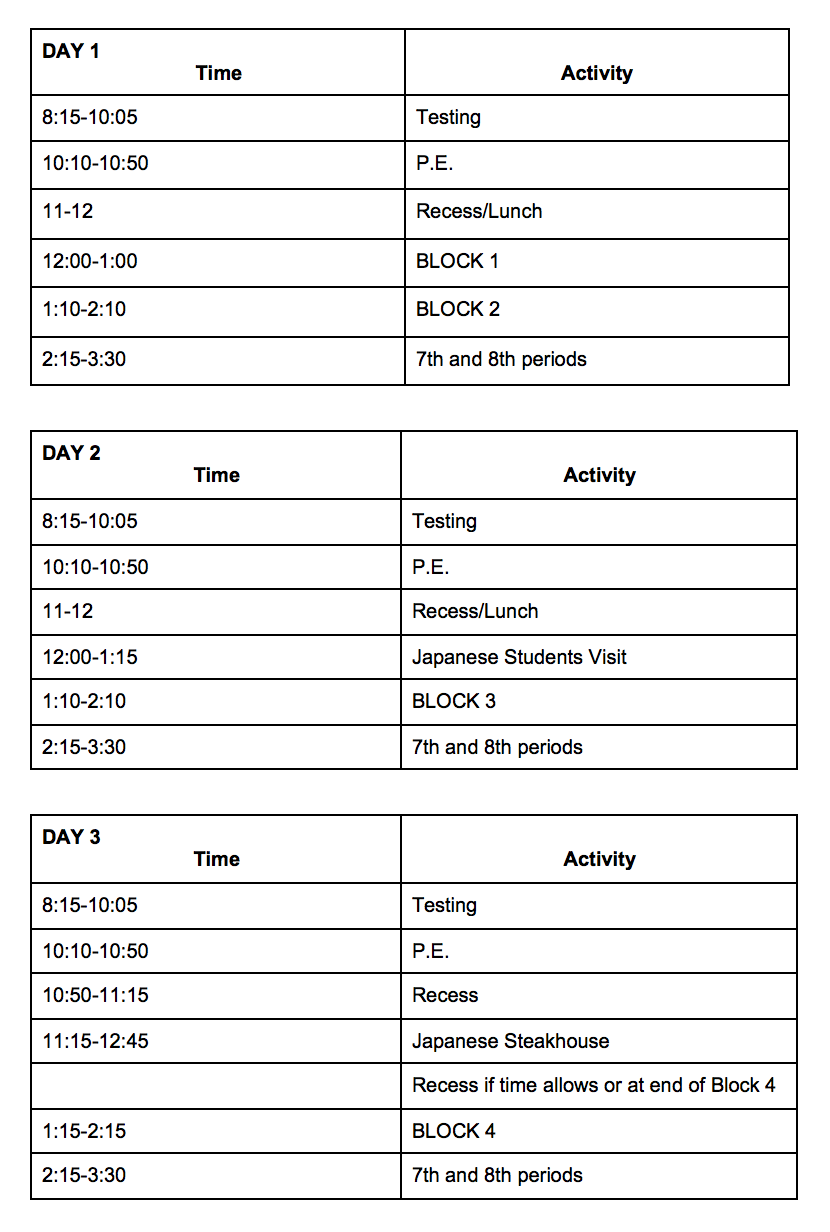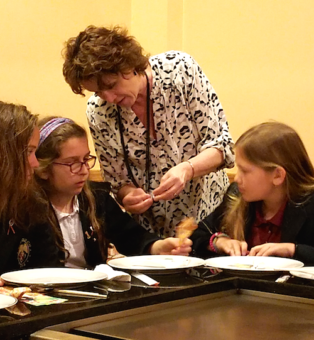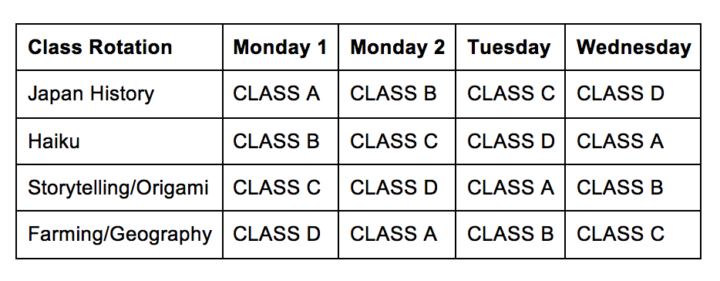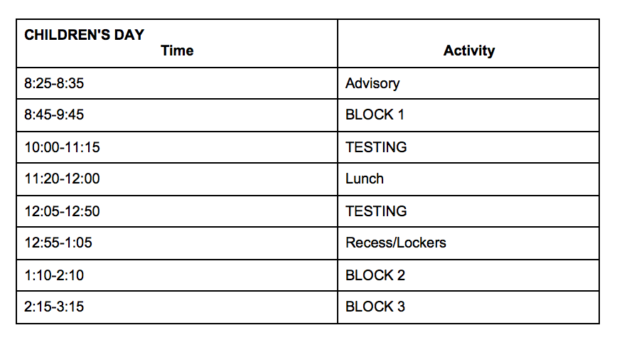Optimize ‘Wasted Time’ on Annual Testing Days
Here we go again. Every year, we muddle through our standardized testing commitments, devoting precious hours to juggling the possibilities and wondering if some of the “wasted” time could be better utilized.
What will our schedule be? How many days or hours will be devoted to testing and lost to instruction? Should we spend half of the day with testing and the other half with a modified class schedule? Should we fill as much of the day as possible with tests to lose less learning time?
Here are some things we’ve learned in years past. Student brains do not function well after spending mornings intensely focused on standardized testing. But all-day testing will not proffer the best results. So we have found ourselves left with half days of unproductive time, wasted on a shortened schedule, or with pale attempts at continuing our curriculum, or even early dismissals.
It’s also the case (perhaps at your school, too) that our teachers are left groaning at the disruption to the schedule, the curriculum, and the general momentum of learning. What if, however, teachers had control of the schedule and viewed this time as an opportunity rather than an imposition?
What if teachers could use this time to introduce new ideas and projects that seem impossible to accomplish during the regular routine and schedule? What if teachers viewed those half days as bonus time, unencumbered by the regular curriculum?
Our fifth grade team did just that during our standardized testing week last March. And our results were very satisfying!
The background
Over the years, we had experimented with many different testing schedule options in our attempt to maximize our teaching time – from extending testing to 7 days (hoping to lower the stress and weariness factor) to shoving all of the tests into 2.5 days.
Adding days didn’t help – students (and teachers) suffered visible burnout when testing lasted too long. So we struggled to condense the testing to a minimal number of days. We found, however, that the impact of too much testing in a short time did not improve results either.
Add to this our realization that students always dread the stress of testing week. In the midst of this stressful time, how could we provide a unique and meaningful learning experience to keep them energized?
To solve some of these issues, we gained permission to design a schedule that would permit several flexible time blocks built around periods of testing. Our way of using this time might be different from yours, but perhaps our general approach might inspire others to try something similar.
An exploration of Japan
We decided to focus our flexible time on an integrated unit revolving around Japan. The schedule included two hours devoted to morning testing for three days, followed by an afternoon of integrated learning stations.
We divided our fifth grade students into four groups and created four one-hour classroom rotations in which the students would learn about Japanese geography, farming, history, and culture. We ensured the ability to maintain P.E. for the students’ benefit as well as a designated recess time. Because our Arts classes provide active learning and projects, we chose not to disrupt the Art Block posted at the end of the school day.
Our afternoon schedule permitted two rotations per day and also included a luncheon field trip. Our schedule looked like this:

In social studies, students explored Japan’s geography, examples of terracing, and life of the samurai. Our language arts teachers created two separate lessons. One focused on Japanese storytelling and the other on creating haiku poems.
By chance, we were fortunate enough to have Japanese exchange students visiting our school during this week who shared cultural experiences with our students. Without the special schedule planned, we likely would not have been able to incorporate their visit into our normal routine.
And on one of the days, we arranged a field trip to a Japanese steakhouse for lunch to experience another aspect of Japanese culture.
Later in the spring, a single day of testing time interrupted our regular schedule and we chose to use the same approach. As it happened, this fell on Children’s Day in Japan, so we designed several classes to celebrate the event.
Our lessons on this day included one hour integrating history and art. This lesson incorporated the history of Japan’s Children’s Day with an art lesson on the color wheel for the purpose of using watercolors to create a carp windsock.

The final block of time was devoted to exploring the concept of “home” by examining a piece of artwork. Teachers divided themselves among the lessons for better supervision as well as team-teaching.
Reflections on our process and yours
Certainly, the days using this scheduling strategy need not be devoted to integrated units; this simply worked well for us at that time. Rotations could be completely unrelated yet designed to be unique or exploratory in nature. For example, one rotation could be a Lego construction lesson/contest, while another could revolve around cooking or music.
Stepping away from rigid curriculum constraints can be liberating and energizing for faculty. Allowing ourselves some space from typical classroom tasks provides students with opportunities to explore and grow in different ways. With lessons such as these, end results (i.e., assessment) do not matter as much as the experiences.

Administrators can offer faculty meetings as a time for teachers to plan while providing the scheduling parameters for the testing. Professional days, or part of one, can be set aside for the dialogue. Collaboration teams can be generated through grade level or department, or even generated as a separate committee.
For administrators who are hesitant to let go of the reins of scheduling and planning, consider the benefits of encouraging teachers to collaborate in its design. Long term, this strategy builds trust and communication, and encourages collaboration, irrefutably key elements of a successful program.
What ways could this time be utilized in your school? Integrated units? Creative writing project? Presentations? STEM or makerspace projects? Virtual field trips? Advisory bonding opportunities? Community service experiences? Movies? Special speakers? Individual conferencing with teachers?
The potential opportunities for exciting learning are really endless. So why not re-purpose all that wasted time during testing days in your school?
_________________
Jennifer Smith has been working with students in the middle for over 20 years. She holds a B.A. from Smith College and an M.A.T. in History from the University of San Diego. In addition to content areas, Jennifer has most recently focused her attention on unique approaches to scheduling and integrating curriculum. She currently acts as a Team Leader and social studies teacher at McDonogh School in Owings Mills, MD.






































Jennifer, what wonderful, energizing, creative ideas. In my district principals met and were responsible for the testing day schedules. Make sure your article gets in the hands of principals so they can see what can be done well before testing time.